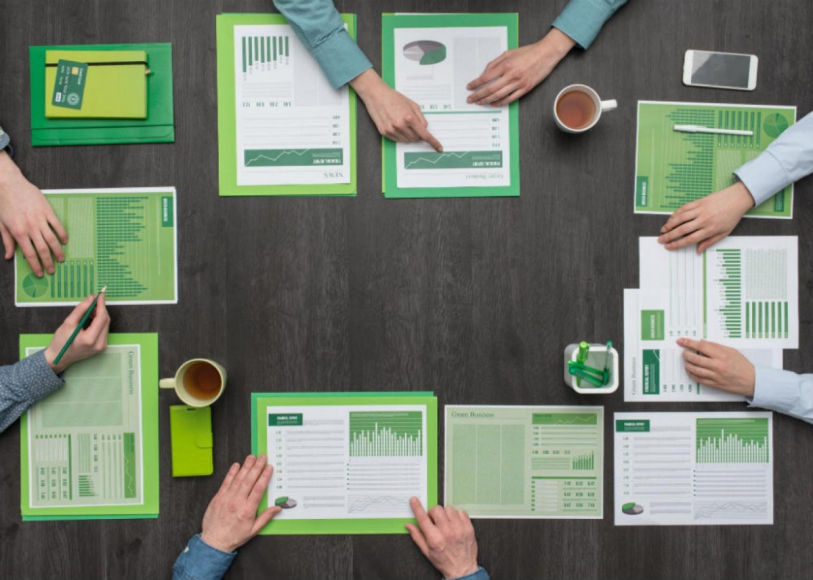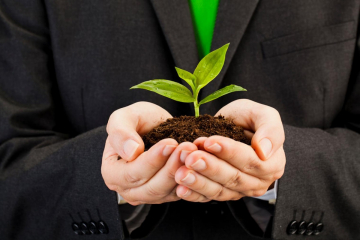How can materiality spark joy among stakeholders? These Marie Kondo-inspired tips can help you tidy up your annual sustainability report.
What brings you joy?
This question is being pondered all around the world as Netflix subscribers turn to celebrity organizing consultant Marie Kondo to learn how to tidy up their lives via her hit show, Tidying Up With Marie Kondo. Kondo’s famous approach to organization, the KonMari Method, invites us to sift through all of our belongings, one by one. The challenge? Keep only the items that bring us joy.
With sustainability reporting and disclosure season in full swing, Kondo’s teachings have some serious relevance for sustainability leaders. Reporting is a massive undertaking, and every year, stakeholders, investors, executive leaders, and consumers seem to raise the bar on transparency and proof-of-action from organizations.
However, materiality in sustainability reporting is more important than ever if you want to spark joy for your stakeholders. And that’s where Kondo’s tips come in handy.
By focusing on materiality, you have the opportunity to define which topics matter most to the business and its stakeholders—allowing you to tidy up your sustainability reports and delight stakeholders. Here’s how you can leverage Kondo’s teachings to do just that.
How to Use Materiality to Spark Stakeholder Joy
Commit to Sparking Joy With Sustainability Reporting
Not to mix metaphors, but as the old adage goes: The journey of a thousand miles starts with a single step. When it comes to tidying up, the first step, according to Kondo, is simply making a commitment to change.
For sustainability leaders, you’ve already made the commitment to report on your sustainability initiatives, but now is the time to commit to stakeholder materiality. With materiality at the forefront of your reporting strategy, you have the opportunity to show stakeholders that you’re not only devoted to transparency, but also to your sustainability efforts as a whole.
‘Imagine’ What Sustainability Reporting Joy Looks Like
First comes commitment. Second comes imagination. The KonMari Method dictates that we must “imagine our ideal lives” to spark motivation and fulfil on the commitment we just made.
But when it comes to our stakeholders, we’re not mind readers—and gut feel isn’t a savvy strategy. The good news is we don’t have to imagine what our stakeholders may or may not want to know. We can tap into their imaginations by conducting a materiality assessment.
How do materiality assessments add insight and value? Materiality assessments are formal engagement exercises that allow you to gain insight into what internal and external stakeholders consider the most important focal points when it comes to environmental, social, and governance (ESG) issues.
From identifying key stakeholder issues and attitudes to understanding how different groups prefer to consume information, the insights generated from an assessment are critical for ensuring you deliver a sustainability report that is relevant and that resonates.
Read: Sustainability Reporting: Are You Disclosing What Really Matters to Your Investors?
Let Go of What You Don’t Need and Stakeholders Don’t Want
After conducting your materiality assessment, you’ll undoubtedly uncover opportunities to discard data and content that don’t serve a purpose for your stakeholders—or your sustainability narrative.
To throw yet another old adage into the mix: Less is more.
Of course, this requires a delicate balancing act—especially when it comes to meeting the evolving reporting requirements for third-party institutions. No one, especially Kondo, advocates for throwing everything out and starting from scratch. The point here is that with less clutter, you’ll have the opportunity to methodically and more swiftly organize what’s left.
Take It One Stakeholder Group at a Time—And ‘Follow the Order’
When it’s time to get to the nitty gritty of tidying, the KonMari Method advises us to tidy by category to help avoid feeling overwhelmed or paralyzed by the amount of stuff we have.
Chances are, you have an enormous amount of data at your disposal. And thanks to your commitment, materiality imagination, and first pass at decluttering, you can now focus on building your sustainability narrative, communications plan, and subsequent report for each distinct stakeholder group.
The imperative here? Stay on task—or as Kondo would say: “Follow the right order.” Trust the process you’ve put in place and work it from top to bottom.
Get a Glimpse of Stakeholder Joy
The final step in the KonMari Method is to look at every item and ask yourself: Does it spark joy? Of course, this is a question your stakeholders need to answer—but you should be leading the discussion.
Whether you decide first to share some common themes uncovered in the materiality assessment or you move ahead with leveraging those insights for a final report, engage your stakeholders throughout the process, gather feedback, and make notes of how you can refine going forward.
In addition, to ensure you continue inspiring that joy, make regular stakeholder engagement part of your strategy all-year round. This will help you keep a pulse on joy.
Embrace Materiality. Spark Joy.
As we like to say: Materiality is in the eye of the be(stake)holder. By committing to materiality, you have the opportunity to deepen relationships with stakeholders, tap into their imaginative minds, and uncover what really matters so you can craft a sustainability narrative that joyfully resonates.
Reporting season is here. Are you set up to spark stakeholder joy? Get the scoop on how to approach conducting a materiality assessment.
Want more news and insights like this?
Sign up for our monthly e-newsletter, The New Leaf. Our goal is to keep you updated, educated and even a bit entertained as it relates to all things EHS and sustainability.
Get e-NewsletterHave any questions?
Contact us to discuss your environment, health, safety and sustainability needs today.





